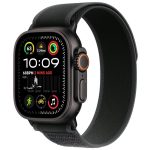- You can score ample cushioning, support for long mileage, or just the basics for the occasional jog at an affordable price.
- Some of the best athletic brands like New Balance, Hoka, and Brooks have great runners at $100 to $130.
- Our top pick, the , is cushioned, durable, and great for short jogs or multi-hour runs alike.
I’ve been running for more than 20 years and, in that time, I’ve tried just about every type of shoe on the market on every type of run, from marathons, to weekend trail runs, to around-the-block sprints.
Along with Brian Metzler, author of Kicksology, a comprehensive look at the history and science behind running shoes, and Mike Fronsoe, owner of the Fleet Feet specialty running store in Monroe, LA, we’ve put in thousands of miles on running shoes and have zeroed in on what pairs are worth the splurge – and which are great at a savings.
It’s common to come across running shoes at $250 that promise – and, honestly, do deliver – faster times. For the average runner, however, that’s more shoe than you’d ever want or need. Thankfully, the market offers its fair share of affordable options, too.
“There are plenty of good, mid-range shoes in the $110 and under market,” Metzler told Insider. “The challenge is there’s a lot of marketing that goes into selling shoes and that jacks the prices up.”
To help narrow down the growing selection of cheap running shoes, I highlighted a few of our favorites that I’ve enjoyed running in and that takes Metzler’s and Fronsoe’s advice to heart. At the end of this guide, I’ve also included some additional information on how to shop for cheap running shoes, as well as the testing methodology I used.
From brands like Hoka One One and Skechers to Brooks and New Balance, these shoes keep you running comfortably while also staying kind to your wallet.
Here are the best cheap running shoes:
- Best cheap running shoes overall:
- Best-selling cheap running shoes: Brooks Ghost 12
- Cheapest running shoes: Skechers GOrun Fast Quake
- Best all-purpose cheap running shoes: The New Balance 880
- Best cushioned cheap running shoes:
Hoka One One
This is a shoe that works for almost any type of runner, including those looking for some speed, anyone who enjoys added cushion, and just about everyone in between.
Pros: Lightweight (only 6.3 ounces in the women’s model), cushy ride
Cons: With the differential between the heel and toe stack at only five millimeters, it can take some time to adjust to the shoe if you’re used to a bigger offset — expect a couple of weeks of sore calf muscles
Runner’s World voted the Rincon an “editor’s choice” for a speed shoe in its Fall 2019 Shoe Guide — and with good reason. The shoe delivers what is typically hard to produce: a combination of heavy-duty cushioning and a feather-light weight.
I must confess that when HOKA first came on the running scene some 11 years ago, I was a skeptic. The first iterations of their shoes were big and bulky, and I thought I could never run in something with that much cushion. But there was plenty of buzz around the shoes and I finally decided to give the brand a go a few years ago. I’ve since tried out several of its models and settled on the as my favorite for the road.
I’ve put a couple hundred miles on mine and you’d barely notice the wear. I’ve worn them for a variety of distances, from a six miler around the neighborhood on up to longer weekend runs in the range of 13 miles. It’s a responsive shoe that carries me comfortably on any type of pavement. For $115, it delivers performance and longevity.
Best-selling cheap running shoe
Amazon
Fleet Feet, Mike Fronsoe, says this is the number-one selling shoe in his store and remains a fan favorite, 12 versions in.
Pros: 13 different color combinations to choose from, tried-and-true design
Cons: Pushes the limits of affordability at $130
Runners hate when their favorite shoe receives an update that changes the feel or ride they’ve come to love. That’s why the Brooks Ghost stays as a perpetual best-seller in many running shoe specialty stores — it’s always stayed true to its roots.
It’s also an all-around crowd-pleaser that’s not too cushy, not too heavy, not too anything. It’s designed with the neutral runner in mind and works well no matter your running goal. The shoe is known for its soft ride and it’s even able to last up to 400-plus miles.
Best dirt-cheap running shoe
Amazon
Long known for its street style, Skechers made a push into the running space several years ago and its budget runner is an impressive shoe that has marathon-quality style in its DNA.
Pros: You can’t do any better on price than this shoe
Cons: Durability could be an issue if you’re looking for a long-haul shoe
Even Olympic marathoner and winner of the Boston Marathon, Meb Keflezighi, runs in a Skechers model, so the brand must be onto something, right? Coming in at just $65, the GOrun Fast Quake is our most affordable shoe.
The Fast Quake is a lightweight trainer and features the brand’s 5Gen cushioning and cooling “goga mat” insole. Skechers bills this as moisture-wicking and high rebound, to deliver energy return with every step.
I’ve run in an older version of this model and liked its flexible sole and lightweight feel. The men’s version weighs in at 7.8 ounces, and I can say the fit is comfortable and true to size. The shoe might not go the distance through heavy mileage, but it will get you through a couple of weekly training runs and should hold up for a few months.
Best bang for your buck
New Balance
The New Balance 880 is the number two seller in Fronsoe’s store with him adding that, “you can use this shoe for just about anything. It’s firm enough to take to the gym but cushioned enough to run in it on roads.”
Pros: A shoe that has something for just about everyone
Cons: The 880 has a wider toe box than some of its comparable models, so for runners with narrow feet, it may not be the ideal fit
I’ve been a New Balance fan for years and can confirm that the 880 delivers on an all-around basis. I’ve taken them on roads, black-top paths, and even on softer surfaces like a mulch-covered trail and they responded well each time. It’s in its ninth iteration and one of the things I appreciate is that the tweaks New Balance tends to make are smaller, less noticeable ones, so I know I can return to the brands’ shoes over and over again and know exactly what I’m getting.
The 880 retails with a price tag of about $125, so it’s not the cheapest of our choices but one that still checks most boxes. It features plenty of cushioning, a responsive ride, a mid-level weight at 9 ounces, and a mid-range heel to toe drop at about 10 millimeters. In short, it’s the average joe of running shoes and will likely work for most runners.
Best high-cushion cheap running shoe
Hoka One One
Hoka One One’s offers premium cushion, a snug, comfortable fit, and can last for hundreds of miles — and it’s the shoe many runners think of when mentioning the brand.
Pros: All the cushion HOKA is known for with an embroidered upper that provides a snug fit to prevent feet from slipping.
Cons: The stack height of the sole, which is quite big, can be off-putting to some runners, reducing the sense of ground feel.
Hoka is one of the most beloved brands in the running shoe community. It truly has an option for everyone that delivers on the price — enough so that the brand has made the cut for testing on our best women’s running shoes and best men’s, best winter running shoes, and best trail runners for women and for men. (So literally every running shoe guide we have.)
That high praise is largely for its trademark cushioning, and the sixth iteration of the seems to have found the perfect amount to satisfy most fans of its shoes.
Going back to my dislike for overly cushioned shoes, the Clifton surprised me with its performance. I’ve put in a couple of hundred miles in my pair and find that the soft landing remains, as does the responsiveness I appreciate.
At $129, it hits the upper end of the affordability range but if you have any kind of knee or joint pains, are training for a race or just logging high mileage, or generally like more cushioning, this pair is 100% worth the money.
How to shop for cheap running shoes
Before you dive in on price alone, you’d be wise to visit a specialty running shoe store to try before you buy.
“I get a lot of customers who buy a shoe online, find it doesn’t work for them, and then come in to get fitted,” Fronsoe said. “Much comes down to how a shoe feels on your foot.”
Use your time in a shoe store to try a variety of shoes and figure out what works for you in the price range you’re after. Once you know, you can then make it more affordable in a variety of ways. Some stores, like Fronsoe’s Fleet Feet location, have frequent buyer programs offering credit after a certain value of purchases. You can also look for sale tables that feature last year’s versions of shoes — most brands update shoe models about every nine months, which means a past version then moves to a discounted price.
Finally, you can find decent mid-range models online and at big-box stores like Dick’s Sporting Goods. According to Metzler, these stores don’t carry the marquee models but they do have pairs that are functional, and that you can put some miles in.
How I tested cheap running shoes
Each pair of running shoes featured in this guide went through a testing process that included everything from sprint work on a track and leisure park runs to longer multi-hour training sessions and race-pace 5ks. When testing, I judged the shoes across these five categories: fit, comfort, performance, versatility, and value. Here’s how each factored into what shoes were ultimately selected:
Fit: Just because you’re saving a few dollars on a cheaper shoe, doesn’t mean it shouldn’t still fit correctly — and running in an ill-fitting shoe is an easy way to wear yourself out quicker (or to just be mentally finished with your run before you hit your mile goal). Fit encompasses everything from how the shoe feels when it’s first put on, if there are any unnecessary pressure points, and its underfoot feel.
Comfort: Comfort is sort of an extension of fit but goes beyond just how the shoe feels on your foot — it also means looking at how comfortable the shoe stays during a variety of runs. Much of this also comes down to personal preference as some runners prefer highly cushioned shoes from brands like Hoka One One while others like to run on less cushion. The same goes for neutral runners vs. stability shoes.
Performance: If a running shoe doesn’t perform how you want it, you’ll not feel incredibly motivated to keep running with them. This covers everything from stability underfoot and durability to its responsiveness and design.
Versatility: Though I tried each shoe in a variety of environments, they’re not all made to be a jack-of-all-trades style shoe. Some, however, did do well on several surfaces, adding to their versatility as an everyday runner. If it’s a budget shoe you’re after, it’d be great to find one that works just as well on a treadmill as it does on the road.
Value: Value is more than just the final sticker price. For this, I wanted to see if spending less on a pair of shoes was ultimately worth it long-term — since spending less money more often is equal to (if not more than) spending a lot of money once. Thankfully, there are plenty of impressive running shoes that don’t break the bank.
Powered by WPeMatico





